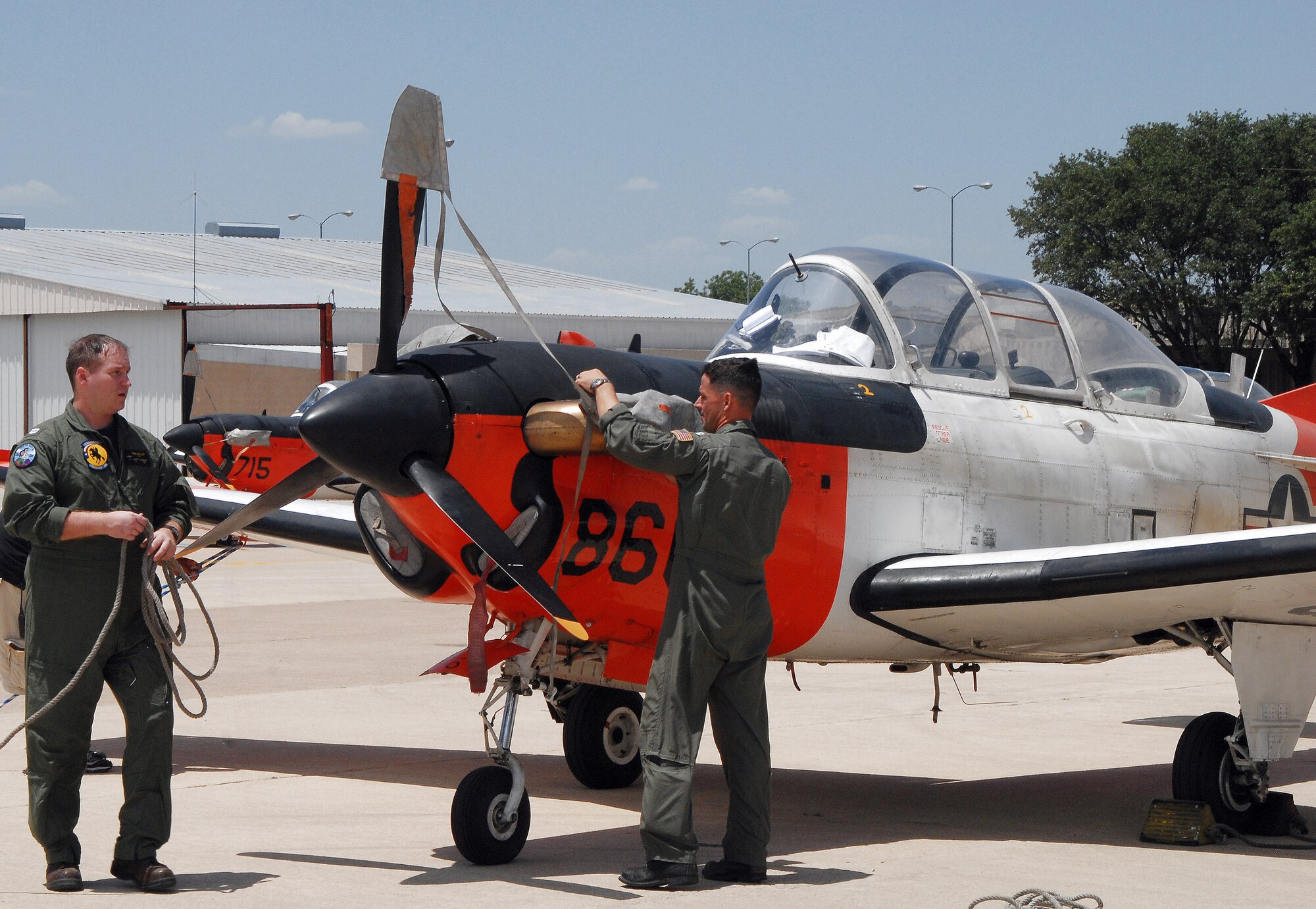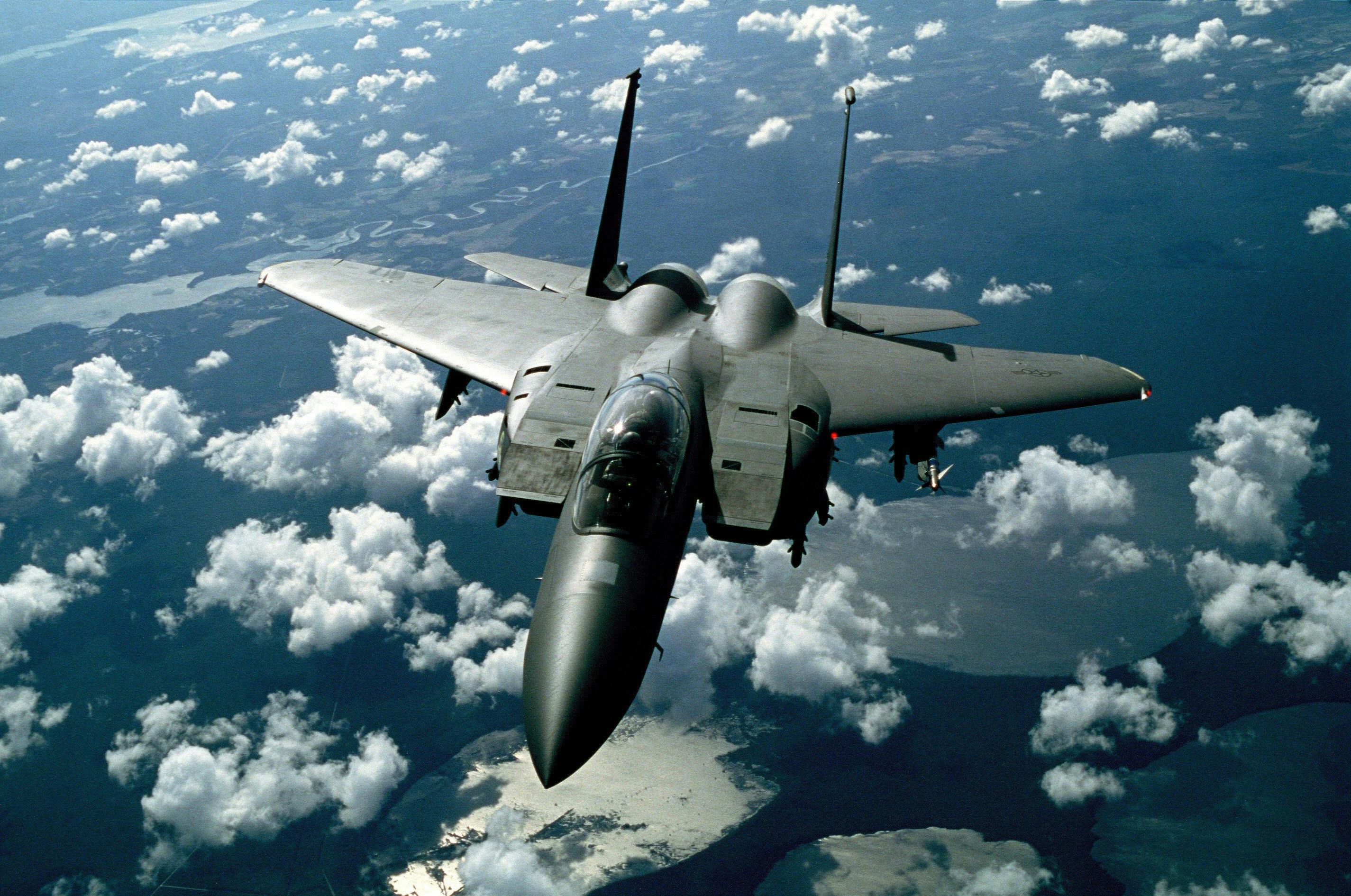T34 Aircraft - One of the latest additions to Salzburg's Flying Bulls fleet is a US coach built by Beechcraft. Mentor is closely related to Beachcraft's civilian bestseller Beach Bonanza.
In 1953, serial production of a new low-cost trainer for the USAF began. When production of the 225 hp monoplane ceased in 1956, 353 aircraft were continuously built. Production of the B Series for the US Navy began soon after. Overall, the Mentor was a huge success, being produced (even with a turbocharged engine) until the 1970s and exported to no fewer than 20 countries. Over the years, the trainer has made many changes to ensure that the aircraft is in touch with the latest technology, highlighting the fundamental and superior performance. The trainer's aerobatic airframe is approved for loads ranging from -3G to +6G. After retiring from military service, the Maker enjoyed great popularity among private pilots due to its ease of flight and full flight capabilities. The tandem design features two identical cockpits with two controls – unlike other military-origin aircraft – and is easy to maintain and affordable.
T34 Aircraft

When Flying Bulls buys used aircraft, it is common practice to completely refurbish them to meet the aircraft's highest standards. When asked about the condition of the plane, the salesman replied that the live coach was well cleaned. In fact, the Mentor was professionally restored after decommissioning by the USAF with great attention to detail. Finally, Flying Bulls had to equip the aircraft with a new engine and propeller. The new Continental IO-550G engine provides approx. 280hp. An extra 55hp (compared to the original engine) not only ensures safer operation, but also means more fun! The trainer, serial number G757, entered service in 1955 at Bartow Air Base, Florida. Since 1958, Mentor has been stationed at Steward Airbase in New York. It passed out of public hands in 1982 and changed owners no fewer than six times before finding a new home at the Flying Bulls in Hangar 7. The Mentor is very popular with our pilots and is perfect for training flights and touring. . Small air shows and events in Austria and neighboring countries The Beechcraft T-34 Mtor is an American propeller-driven, single-engine military training aircraft from the Beechcraft Model 35 Bonanza. Early versions of the T-34 from the late 1940s to the 1950s were piston engines. These were succeeded by the improved T-34C Turbo-Mtor powered by a turboprop engine. The T-34 remained in service for more than seven decades after it was first designed.
Beechcraft T 34 A. Mentor
The T-34 was the brainchild of Walter Beech, who developed it as a private Beechcraft Model 45 vture when he did not have the diffuse budget for a new trainer model. Beech hoped to sell it as an economical alternative to the North American T-6/SNJ Texan used by all services of the US military.
Three early design concepts were developed for the Model 45, one of which included the Bonanza's signature V-tail, but the final design that appeared in 1948 incorporated tail control surfaces for a strict military look.
(showing the largely unchanged vertical wing entering the Travel Air twin-gin civil aircraft about T years later). The Bonanza's four-person cabin fuselage was replaced by a smaller fuselage that incorporated a two-seat cockpit and bubble canopy,
This provided greater visibility for the trainee pilot and flight instructor. Structurally, the Model 45 was stronger than designed +10g and -4.5g, while the Continental E-185 produced 185 horsepower (hp) at takeoff (less than a third of the T-6). gine) is similar to that established in modern bonanzas.
T 34 Mentor Turbo For Fsx
This may indicate that it is closer to the production version. Production did not begin until 1953 when Beechcraft began exporting T-34As and similar model B45s to the United States Air Force (USAF). Production of the T-34B for the United States Navy (USN) began in 1955 and this version has many variations reflecting the different needs of the two services. The T-34B only had ground control differential braking instead of nose wheel steering, additional wing dihedral, and adjustable pedals instead of the T-34A's movable seats to accommodate different pilot heights.
Production of the T-34A ended in 1956, and T-34Bs were produced until October 1957, along with licensed versions of the Canadian-built B45 (125 built by a Canadian car and foundry),
In 1955, Beechcraft built a jet-engine derivative, again as a private enterprise, again hoping to win a contract with the US military.

The Model 73 jet motor shares many components with piston engine airplanes; The main visual difference is a redesigned cockpit moved forward in the fuselage and jet jib air intakes in the wing roots, feeding air to a single 920 lbf (4.1 kN) Cotintal J69 jet jib in the rear fuselage.
Beechcraft T 34a Mentor
Model 73, registered N134B, was 18 December 1955. The Model 73 was tested by the USAF, which ordered the Cessna T-37, and the USN decided on the Temco TT Pinto. After initial testing at the Naval Air Test Sector at NAS Patuxt River, Maryland, the Navy tested the possibility of using the TT Pinto as a jet-powered trainer for advanced flight training in 1959, but it was retired and scrapped in December 1960. . All models revert to the piston-powered T-34B Mtor and the North American T-28 Trojan for its primary flight training requirements. The Beechcraft Model 73 was never produced
T-34C The T-34C Turbo-Mtor is distinguishable on the B model (piston) with an extended nose and exhaust stacks on either side behind the prop to accommodate a turboprop engine.
After a production hiatus of about 15 years, Pratt & Whitney Canada developed the T-34C Turbo-Mtor in 1973, powered by the PT6A-25 turboprop engine.
The original T-34 modified Bonanza/Debonair-style wing was replaced with a larger Beech Baron wing, and the original Bonanza/Debonair-style landing gear was replaced with landing gear from the even-larger Beech Duke.
Beechcraft T 34 Mentor Trainer Aircraft Stock Photo
After relaunching as PT6, both of these aircraft were redesignated YT-34Cs, the first of which flew with turboprop power for the first time on 21 September 1973.
Mtor production resumed in 1977, delivering T-34Cs to export customers and the T-34C-1 armored version in 1977.
Since the late 1970s, the U.S. Navy, US The Army Air Training Command used T-34Cs to train many U.S. Naval aviators and flight officers in the Marine Corps. Coast Guard and NATO and allied countries. After 35 years of service, the T-34C was completely replaced by the T-6 Texan II.
The first flight of the Model 45 was on December 2, 1948 by Beechcraft test pilot Vern Karst.
Historical Snapshot: Beechcraft T 34 Mentor In Canada's
A long competition followed to determine the new trainer, and in 1953 the Air Force entered service with the Model 45 as the T-34A Mtor, followed by the USN T-34B in May 1955.
After extensive testing, the USAF ordered the Mtor to be built as the T-34A in early 1953. The first production T-34A was delivered to the Air Training Command in October 1953 at Edwards Air Force Base, California. ATC) started in 1954. The T-34A entered service at "contract" pilot training air bases in the southern United States as the USAF's first trainer aircraft, replacing the AT-6 Texan trainers in North America. Following training on the T-34A, USAF pilot trainees will transition to the North American Trojan T-28A for intermediate training.
The T-34A Mtor remained the USAF's standard trainer until the introduction of the Cessna T-37 Tweet jet trainer in the late 1950s to replace the T-34A and T-28A. This coincided with the implementation of ATC's Initial Pilot Training (UPT) syllabus at various Air Force units in the United States at the request of ATC and the termination and termination of pilot training contracts for air bases. As they were replaced by T-37s, several T-34As were transferred to USAF aero clubs at Air Force bases in the United States and USAF air bases overseas. In total, the USAF received 450 T-34As.
As the US The Air Force replaced the last of their T-34As in the early 1960s, their role being taken over by the propeller-driven T-41 Mescalero and the T-37 Tweet, the first jet trainer in the UPT, to which those T-34As were designated. Aero clubs of the USAF or clubs marked for foreign military sale or transfer were transferred to the USAF Auxiliary Civil Air Patrol for use as reconnaissance aircraft. However, the T-34A's low wingspan limited its use in the aerial search and rescue role, as did maintenance issues, particularly the repair of the spar wings.
Beech T 34c 1 Turbo Mentor (45)
Mentor t34, tank t34, rc t34, t34, airfix t34, niki t34, polar t34, henglong t34, motorguide t34, lego t34, beelink t34, t34 model

